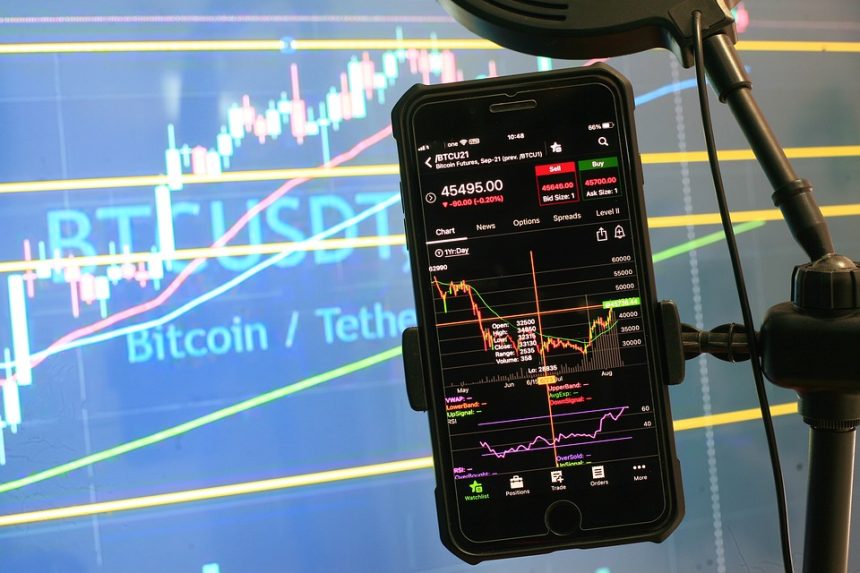In the fast-paced world of cryptocurrencies, few assets have garnered as much attention and investment as Ethereum (ETH). Initially launched in 2015 as a platform to facilitate smart contracts, Ethereum has evolved into a cornerstone of the blockchain ecosystem, powering decentralized finance (DeFi), non-fungible tokens (NFTs), and countless other applications. As innovations in this space continue to develop, a critical question emerges: how do these advancements influence Ethereum’s price?
Understanding the Landscape: DeFi and NFTs
Before delving into the price impact, it’s essential to understand the two major categories driving Ethereum’s innovation.
Decentralized Finance (DeFi)
DeFi represents a suite of financial applications built on blockchain technology, offering users a decentralized alternative to traditional finance. By removing intermediaries like banks, DeFi platforms empower users with unprecedented control over their assets. They can lend, borrow, earn interest, and trade a variety of cryptocurrencies, all while utilizing Ethereum’s capabilities.
Key projects, such as Uniswap, Aave, and Compound, have decentralized financial services, making them accessible and efficient. The explosive growth of DeFi, particularly in 2020 and 2021, propelled a surge in Ethereum’s usage and transaction volumes, thereby affecting its price significantly.
Non-Fungible Tokens (NFTs)
NFTs represent a unique class of digital assets that leverage Ethereum’s smart contract capabilities to signify ownership of a specific item or piece of content. Unlike cryptocurrencies like Bitcoin or Ethereum, which are fungible and interchangeable, NFTs can represent anything from digital art and music to virtual real estate and collectibles.
The NFT boom witnessed in 2021 revolutionized how we perceive ownership, creativity, and value in the digital world. Platforms like OpenSea, Rarible, and NBA Top Shot led this charge, driving massive demand for Ethereum as the primary blockchain for minting and trading NFTs.
Price Impact of Innovations
Increased Demand and Usage
The emergence of DeFi and NFTs has exponentially increased the demand for Ethereum. More users require more ETH to engage with these platforms, either to pay for transaction fees (gas) or to participate in various protocols. As the demand for Ethereum grows, so does its price.
During the height of the DeFi boom in 2020, Ethereum’s price soared from around $100 in January to nearly $4,800 by November 2021. This spike correlated closely with the skyrocketing total value locked (TVL) in DeFi applications, illustrating how innovations directly fuel price increases.
Similarly, the explosive rise of NFTs in 2021 saw numerous high-profile sales driving significant attention and investment towards Ethereum. The sale of a digital collage by artist Beeple for $69 million highlighted the potential value of NFTs, further enhancing Ethereum’s market profile.
Network Congestion and Supply Dynamics
However, as usage increased, so did network congestion, causing high gas fees that deterred smaller transactions. This phenomenon sparked significant debate within the Ethereum community, prompting discussions about scalability solutions such as Ethereum 2.0 and Layer 2 technologies. These innovations aim to improve transaction throughput and reduce costs, which are critical for sustaining long-term growth.
The transition to a proof-of-stake consensus mechanism (Ethereum 2.0) is expected to reduce inflationary pressure on ETH by limiting the supply over time, thereby potentially increasing its value. As Ethereum becomes more efficient, it could unlock greater participation in both DeFi and NFT sectors, leading to more significant price implications.
Market Sentiment and Speculation
Market sentiment plays a crucial role in the pricing of Ethereum. Innovations often generate hype, bringing in new investors who speculate on the asset’s future value. The notorious volatility of cryptocurrency markets can amplify price swings fueled by excitement over technological advancements.
Media coverage, community discussions, and celebrity endorsements can also sway investor sentiment. For instance, as notable musicians, artists, and brands began endorsing NFTs, Ethereum’s visibility surged, driving speculative investments that contributed to price increases.
Looking Ahead: Future Innovations and Price Implications
As Ethereum continues to innovate, additional trends can influence its price dynamics. The rise of multi-chain ecosystems, interoperability, and the growing emphasis on security will play vital roles in the Ethereum landscape.
Moreover, the impending transition to Ethereum 2.0 aims to resolve many existing issues, promising greater scalability and reduced energy consumption. If successful, this upgrade could establish Ethereum as the leading platform not only for DeFi and NFTs but for broader applications, potentially driving its price to new heights.
Lastly, regulatory developments will also shape Ethereum’s future. As governments around the world establish frameworks for cryptocurrencies, positive regulations could further legitimize Ethereum and bolster investor confidence, while restrictive measures could create uncertainty and dampen demand.
Conclusion
The innovations surrounding DeFi and NFTs have profoundly impacted Ethereum’s price trajectory, driving demand and usage, while also posing challenges in terms of scalability and network congestion. As Ethereum continues to evolve, its price will likely remain influenced by ongoing innovations, market sentiment, and the broader economic landscape. For investors, staying informed about these dynamics will be crucial in navigating the uncertainties of this ever-changing market. The journey from DeFi to NFTs is just the beginning, and the future holds even greater possibilities for Ethereum and its price.






